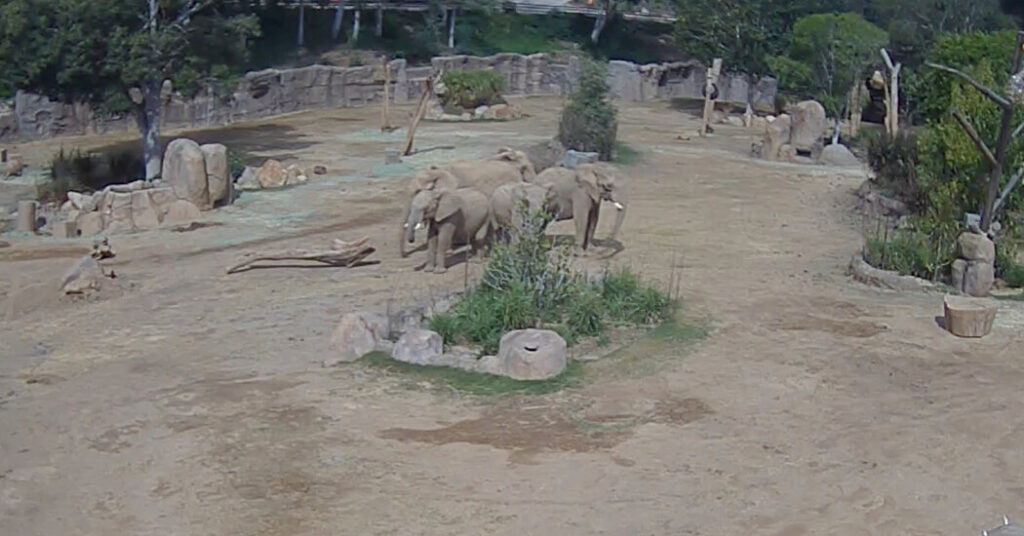The response from the elephants was a defensive position known as “bunching,” and is a typical reaction to threats, said Joyce Poole, a conservation biologist with a doctorate in elephant behavior from Cambridge University. “They feel more secure when they are close together,” she said.
When bunched, elephants often have their tusks pointed out, ears extended, eyes opened wide and trunks out, trying to smell potential threats. The formation, “like the spokes of a wheel,” Dr. Poole said, gives the group a 360-degree view of their surroundings to pinpoint any danger. The younger members instinctively seek out the most protected position inside the circle, she said.
In San Diego, the earthquake put on display some particulars of this group’s dynamics, Mindy Albright, a curator of mammals at the San Diego Zoo Safari Park, told The Associated Press.
A female calf, known as Mkhaya, sought the safety of the inner circle of elephants, but a male calf, named Zuli, squared up with the matriarchs on the outside, striving to display his courage and independence, Ms. Albright said. Two of the older female elephants — Ndlula, Zuli’s mother, and Khosi, a teenage elephant who helped raise him — can be seen patting him on his sides and face with their trunks as if to say “things are OK,” and “stay back in the circle,” Ms. Albright said.
Researchers believe elephants are able to feel tremors through their feet, allowing them to sense tiny vibrations — caused by thunder, calls from other elephants or stampedes by other animals — even at long distances. “They detect that animals are running, and therefore there is something potentially to be fearful of,” Dr. Poole said.
https://www.nytimes.com/2025/04/15/us/elephants-san-diego-zoo-earthquake.html


